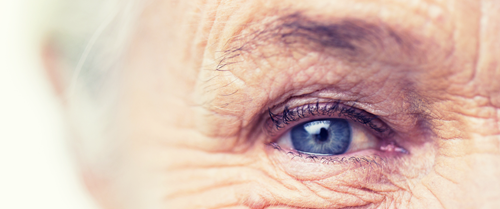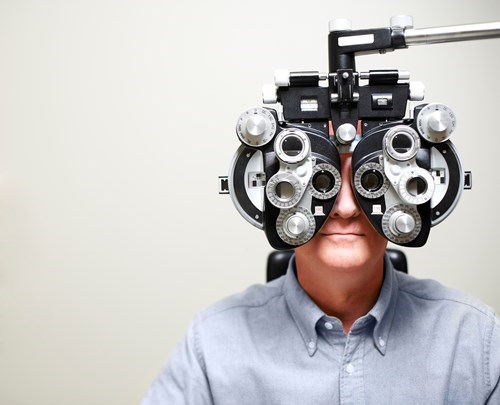What Is Diabetic Retinopathy?
22 August 2019

1,600 people lose their sight to diabetes every year.
Diabetes is one of the leading causes of sight loss in the UK. Diabetic retinopathy, diabetic macular edema, cataract and glaucoma can all affect people who suffer with Type 1 or Type 2 diabetes.
Today we are talking about diabetic retinopathy; a serious eye condition that is caused by damage to the blood vessels in the retina (light-sensitive tissue at the back of the eye).
If left untreated the condition will gradually worsen and can lead to complete loss of vision- a scary thought for anyone.
So, let’s look into the causes, symptoms and treatments of diabetic retinopathy.

What causes diabetic retinopathy?
One in three people living with diabetes have some degree of diabetic retinopathy, but all are at risk of developing it. It may help to know exactly what is happening inside the eye to cause this condition.
The retina needs a continuous supply of blood in order to function correctly. This blood is carried and received through a system of tiny blood vessels. Consistent levels of high blood sugar, as diabetes sufferer’s experience, damage these blood vessels over time.
Diabetic retinopathy occurs when these damaged blood vessels in the retina start to leak. This in turn causes retinal tissue to swell, resulting in problems with vision.
Keeping blood sugar levels down is vital for a healthy functioning retina. As well as taking insulin as directed by a doctor, this can be achieved through:
- A healthy diet and avoiding foods high in processed carbohydrates such as white bread, sweets and cereals.
- Staying hydrated by drinking plenty of sugar-free fluids. Remember to drink a minimum of 2 litres of water per day.
- Exercising. Even low impact exercises such as walking can make a huge difference, if performed regularly. Keeping fit will also help strengthen your heart and aid in weight loss.
People most at risk of developing diabetic retinopathy are those who:
- Have Type 1 or Type 2 diabetes
- Have consistent high blood sugar levels
- Have high blood pressure
- Have high cholesterol
- Are pregnant
What are the symptoms of diabetic retinopathy?
Diabetic retinopathy does not often cause noticeable symptoms in the early stages. Unfortunately this means that most people are unaware that they have developed the condition until it has become advanced. This is why regular eye screening is vital for those who have Type 1 or Type 2 diabetes.
Symptoms include:
- Eye floaters (dark spots or strings floating in your line of vision)
- Blurred vision
- Decreased colour distinction
- Empty areas in vision
- Sudden vision loss
- Eye pain
The four stages of diabetic retinopathy
Diabetic retinopathy progresses through four stages. Knowing which stage you are in will help determine how much damage has been caused. This will be determined during your eye examination.
Stage 1. Background retinopathy: Eyesight will not be affected at this stage, but prevention will be needed in order to stop it from worsening. Your optician will be able to advise.
There is a 25% chance that the condition will progress from this stage within 3 years.
Stage 2. Non-proliferative retinopathy: The damage to the retina is becoming more serious and eye screening will be required every 3-6 months.
At this stage, the blood vessels in the retina will start to swell and therefore will not carry blood as adequately as they should be. Physical changes to the retina will begin.
Stage 3. Proliferative retinopathy: By stage three there is a greater risk of retinal detachment and sight loss. This is because of the scar tissue that has formed on the retina, which can lead to bleeding and cause the retina to pull away from the back of the eye. Treatment will be needed here.
Stage 4. Maculopathy: Also known as diabetic maculopathy. This type of retinopathy occurs when there has been significant damage to the macula (central part of the retina), affecting central vision. Daily tasks such as reading or driving will become extremely challenging.
Patients should be referred to the hospital at this point to discuss treatment.

How is diabetic retinopathy treated?
If diabetic retinopathy is in the advanced stages, treatment will be needed. Which treatment a patient receives depends on how advanced the condition is.
Types of treatment include:
Laser treatment
Laser treatment is the most common treatment for advanced diabetic retinopathy and works by treating new blood vessels in the retina. Although laser treatment will not reverse damage that has already been made, it can prevent the condition from worsening.
Here’s what to expect:
- Patients will be able go home on the same day; although you will need someone to escort you home after surgery.
- Local anaesthetic is administered prior to treatment so no pain is experienced.
- The procedure will last around 30 minutes from start to finish.
- The laser may cause a little swelling in the eye, but this usually gets better in a few weeks.
Eye Injections
Eye injections will be recommended if the condition has advanced into diabetic maculopathy. This type of treatment works by slowing down retinal damage and improving eyesight.
Most people will need a course of three injections, which are generally administered once per month. A few days prior to each treatment an antibiotic eye drop will be applied to help prevent infection. The injection itself will only take a few seconds and feels nothing more than a scratch.
The active drug used here is called anti-VEGF; effective in preventing blood vessels from growing and helping to control leaking. Preserving central vision is the main benefit.
Like laser surgery, patients are strongly advised to have someone escort them home after the procedure. This is because vision can be very blurry for the next few hours and driving would not be safe. Patients may also experience temporary eye floaters for the next few weeks. This is simply the medicine moving around inside the eye and is not cause for concern.
Surgery
Vitreoretinal surgery is needed if a large amount of blood has collected within the eye or if there is extensive scar tissue that's likely to cause or has caused retinal detachment.
Vitrectomy is a procedure in which a small incision is made in the eye to remove some of the vitreous humour (gel like fluid in eye), removing scar tissue. A laser is then applied to prevent further deterioration of vision.
With this type of surgery you will need to have a general anaesthetic and stay overnight in the hospital. The surgeon will go through the procedure and recovery in detail prior to treatment.
Diabetes is one of the leading causes of avoidable sight loss in the UK. You can prevent it by attending regular eye examinations, so please don’t neglect your eyes. If you have diabetes and are concerned about your eyesight, we advise that you visit your opticians without delay.
Back to Blog
